GMOs & Population Growth
This lesson covers:
- How human population has been increasing rapidly, requiring us to produce more food
- How genetically modified organisms (GMOs) have helped increase farming yields
- Examples of genetically modified organisms
- The pros and cons of GMOs
World population growth & food production |
 Over the past 200 years, the human population has increased dramatically. In 1820 there were approximately 1 billion humans on earth. Today there are almost 8 billion. |
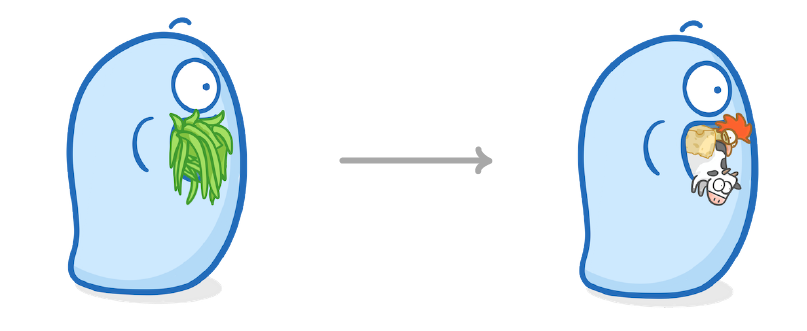 The average person also eats a lot more than the average person did in the past, and the food they eat is often more resource intensive to produce in the first place. For example meat and dairy require more resources to produce than rice or grain. |
As a result, global food production has had to increase massively over the past 200 years, and the following factors have helped make this possible:
|
Roughly how much has the world population increased by in the last 200 years?
1 billion ➔ 8 billion people
1 trillion ➔ 8 trillion people
1 million ➔ 8 million people
|
Do people eat more or less food today than in the past?
More food
Less food
|
Over the past 200 years, why has the food that we eat become more intensive to produce?
|
What have humans done to allow them to increase their production of food?
|
Genetic modification |
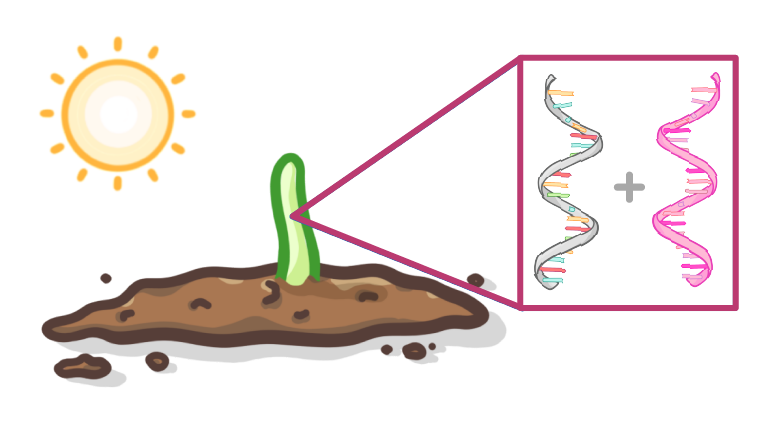 Genetically modified organisms, also known as GMOs, are organisms whose genome has been modified. This normally involves the addition of a helpful gene, such as a gene to cause faster growth, or a gene that makes the organism resistant to a disease. |
Pest resistance: |
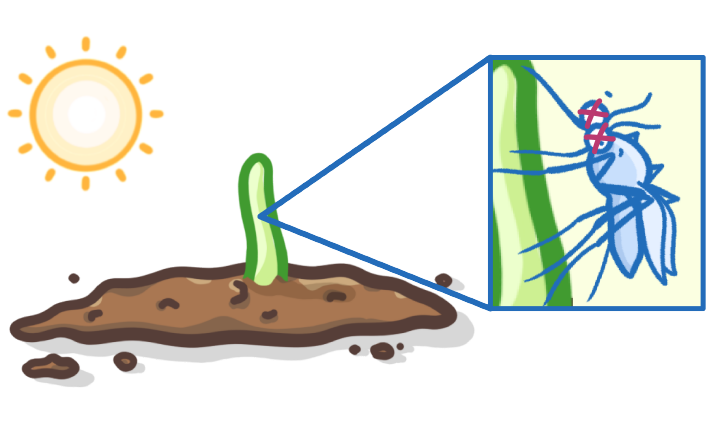 Some crops have been genetically modified so that they produce toxins that kills insect pests. This means that any insects that try to feed on them will die, and so won't be able to damage them - increasing the crop yield. This also means that farmers don't have to use as much chemical pesticide. |
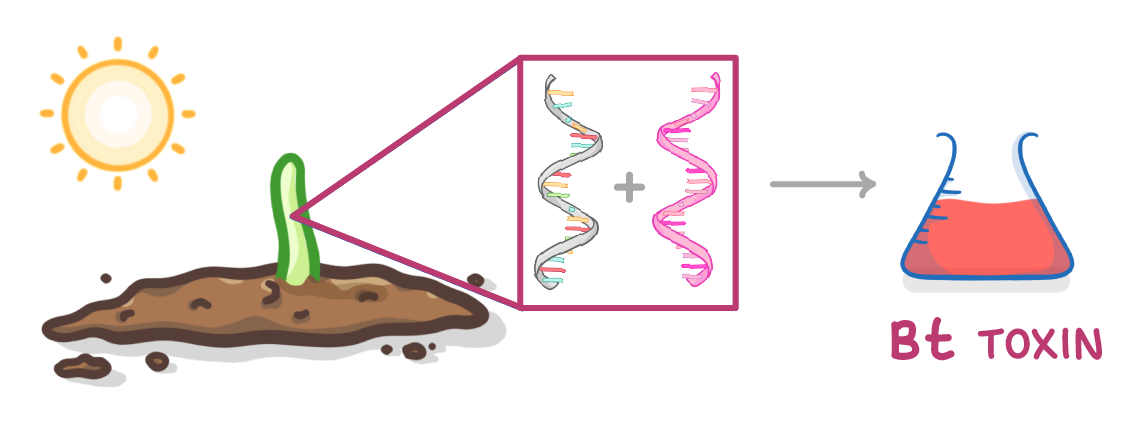 An example of this is the 'Bt toxin', which is naturally produced by the bacteria Bacillus thuringiensis (Bt). Scientists have inserted the gene for the Bt toxin into some crop species so that they produce the toxin, making them resistant to insect pests. |
Increased nutrients |
Some crops can be modified to increase the amount of useful vitamins or minerals they contain. |
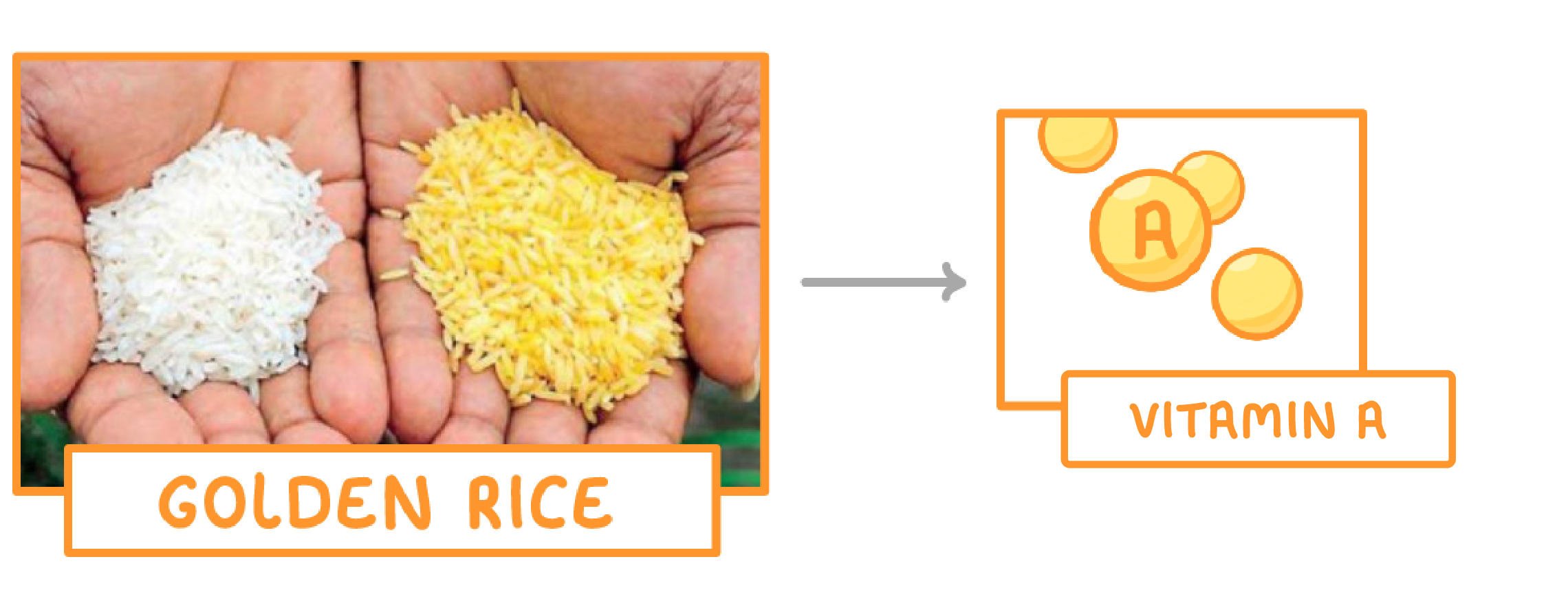 For example, 'Golden Rice' has been genetically modified to produce a chemical that is converted to vitamin A in the body. This is helpful in regions of the world where vitamin A often causes deficiency diseases, such as blindness. |
Other examples of GMOs having improved traits:
|
What does 'GMO' stand for?
|
What do pesticides do?
Kill weeds
Provide plants with nutrients
Kill insects
|
What type of organism is the Bt toxin naturally produced by?
Bacteria
Animal
Fungi
Plant
|
What type of organism has been genetically modified to produce the Bt toxin protein?
Fungi
Bacteria
Animal
Plant
|
Golden rice
'Golden Rice' has been genetically modified to produce a chemical that is converted to vitamin in the body. This is helpful in regions of the world where lack of this vitamin can often cause deficiency diseases, such as .
|
Give 3 traits that can be improved by genetic modification.
|